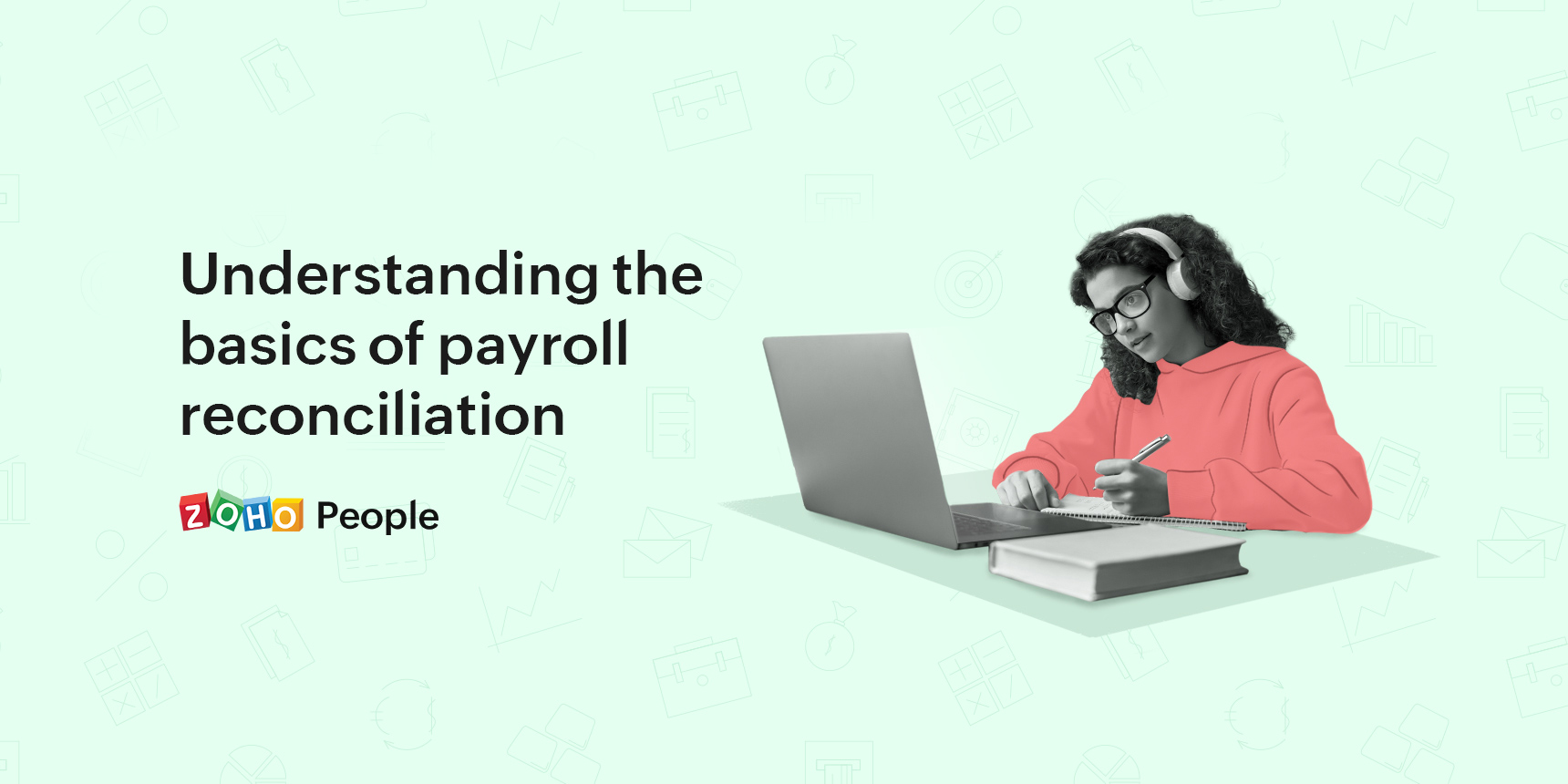- HOME
- HR insights
- Understanding the basics of payroll reconciliation
Understanding the basics of payroll reconciliation
- Last Updated : August 23, 2023
- 9.5K Views
- 4 Min Read

Let's say you run a small organization and you're looking to establish a payroll process for the first time—or maybe you're a young business professional taking on a new payroll job. Either way, it can be nerve-wracking taking charge of such an important financial task. Employees expect consistent, timely paychecks, but rushing the process can lead to overpaying or underpaying people. That's why it's better to be thorough and monitor the payroll process carefully from beginning to end. Payroll reconciliation is one way to check that employees are being paid correctly and that last-minute changes are accounted for. It takes time, but it's well worth it to avoid processing a payroll record that's riddled with errors.
In this article, we'll break down the basics of payroll reconciliation so you can have a better understanding of how to process payroll efficiently and correctly every time without fail.
What is payroll reconciliation?
During payroll reconciliation, you compare the current period's payroll amount with the figures listed in your payroll ledger to ensure that both the records match. This acts as a final check to make sure your processed amounts will be accurate. Everything including gross pay, taxes, withholdings, and net pay is recorded in the ledger and these all should be checked and compared with the actual payroll numbers you've calculated.
Why is payroll reconciliation important?
How payroll is handled by you or your team gives signals about your organization's financial integrity. Employees, job-seekers, customers, investors, banks—a poorly managed payroll system will damage your reputation with anyone that interacts with your organization. Not to mention that you are more likely to foster stronger relationships with your employees if they are not left wondering when they'll be paid next.
Payroll reconciliation in particular also helps your organization during audits. With it, you'll always have an accurate record of all your payroll transactions on hand, and compliance and tax filing will become a breeze.
How is payroll reconciliation done?
Here's a five-step process that'll allow your organization to get payroll reconciliation right every time:
Start with your payroll register
The payroll register helps organizations to keep a better track of every payroll transaction. It usually includes information such as employee working hours, the pay schedule, total gross pay, total net pay, and total taxes and other withholdings for each pay period. Double check that every piece of information is correct and updated. If your employees are given a raise or a new employee is brought on, be sure to revisit this data and make any necessary adjustments.
Check the working hours of each employee
This is where the bulk of your payroll costs come from—employee hours. Cross-check these hours with the attendance marked on your employees' timesheets. Be sure to account for things like sick pay, overtime, holiday pay, and more. If you're using a cloud-based time management system, your attendance information should be easy to access. Otherwise, you'll have to calculate them manually from the timesheets. Compare this data with what your payroll register lists.
Double-check salaries
It never hurts to review employee salaries, especially if there were multiple pay raises during the last period. Ensure that you calculate the gross pay of your employees with the right hourly pay rates set by your organization. For salaried employees, the gross pay should remain the same every month, irrespective of the hours they work. Check these amounts against the register before moving on to deductions.
Deductions and taxes
It's very common for deductions and withholding to change in the new year when benefits are renewed and new tax policies go into effect. Coordinate with your finance team and stay on top of any changes that may be happening at the local or national level. You will have to check federal and state taxes, social security, insurance, and more depending on the country and region you are operating in.
Record the data in your ledger
Your organization's general ledger is a record that has a complete list of all its liabilities, assets, revenue, and expenses. It should have every financial transaction done by the business. During this step, the total amount paid to employees is entered in the debit column and the total amount of taxes and other deductions is entered in the credit column of the ledger.
Wrapping up
Payroll reconciliation is an added step to the payroll process, but the time it takes is a worth it for an accurate system that keeps your employees happy and your organization out of legal trouble. Over time, you'll wonder why you ever feared payroll to begin with. It will be faster, easier, and way more efficient. As a final suggestion, we advise that you check with your finance team or an outside professional if you are unsure about the payroll laws in your region. This way, your payroll ledger will be up to date to start off with!
Also read: What is payroll funding?
 Tarika
TarikaContent Specialist at Zoho People


